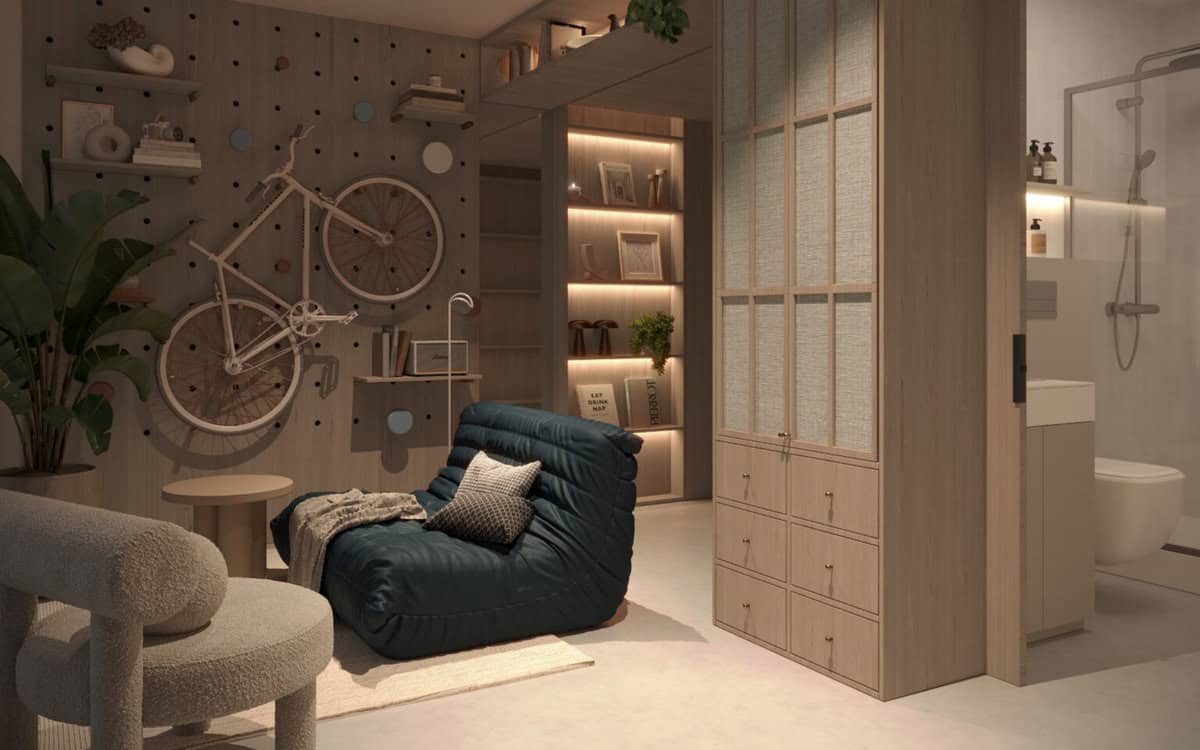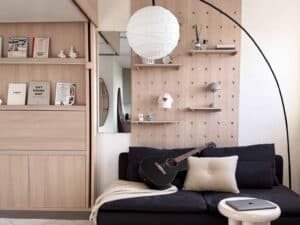The way we live changes the same way seasons come and go. Eons ago, humans used to start a fire by hitting rocks together and hunting in packs. Now, we find everything in the comfort of our homes.
But even our homes have changed the same way we humans did. In the USA, houses have grown by 74% in the past 6 years. That’s more than double if you compare it to the original size a century ago (1910); and double the price, too. Meanwhile, houses in Japan are built and then broken in a cycle that occurs every 20-30 years. Their reason is to adapt to the changing age of citizens who live in it.
With houses having more problems than ever, how do you find a house that is both sustainable and spacious all while being affordable and appealing? Micro living may be the answer to that. While it has been around for some time, microliving has evolved to become a wiser and more beautiful choice for living.
The Citylifer will show you reasons why microliving is on the run for one of the best homes to be in today. We will also reveal several methods on how to transition into microliving. Finally, we will mention thriving examples of houses within the microliving space, helping you on your way to living big, even with micro houses!

Exploring Microliving Trends
Before answering how to join the trend, we must first answer why microliving exists. Microliving is a cheaper, viable, and more effective solution to combat current issues. These issues are the growing population, problems in housing prices, and growing minimalist trends.
Combating Urban Density
Urban density is one of the major factors that led to the rise of microliving. We have done well to make citizens of all nations. But our fewer resources now have a hard time catching up with our constant rate of reproduction. The world population, albeit at a slow rate, continues to grow larger by the day.
But how do you fit a bigger family or a larger community within small spaces? Microliving answers that by boosting interior design to make normal spaces feel larger. With good interior design, ample space and aesthetics can coexist.
Lowering Housing Prices
How about rent? Our ability to make money has grown in the past century, but the prices of commodities also rose along with it. Inflation has always been a problem linked with our money, and rent for houses is no exception. The past pandemic and relocation of professionals to larger cities compound this problem. First-time homeowners may find themselves buying a house that is more pricey now than it was 5 years ago. Meanwhile, renters may pay twice or even thrice what they once used to pay.
The growing population and rising rent prices aren’t a good equation. Housing shortage is now evident in almost all countries – including the Netherlands. How do you deal with it? Microliving answers this by renovating a small space into something spacious and sustainable.
Minimalism
The two problems above may not affect you, but maybe you want to hop on the ongoing minimalism trend. Or you want to find a new way of living with less carbon footprint. Microliving can put you on that path, too. Minimalism teaches that there is no need for you to hoard or find more objects that will soon turn into clutter. With this, your focus will shift from your belongings to the people you belong with.
Microliving is the best choice if you aim to solve problems in housing and population. As a bonus, you even get to add a new minimalist lifestyle.
Growth of Microliving
Microliving is gaining its ground in more and more parts of the world. But students are no longer its only audience. Families have also started to shift into microliving. They find it more appealing and attainable because of the less money needed to start and sustain it. Microliving saves money all while restoring human connection.
More and more countries are starting to see the benefits of microliving. Some have even adapted their houses to this principle. Japan has micro houses that are sustainable all while paying homage to their heritage. The USA continues to build houses and micro apartments without sacrificing its cozy ambiance. These places see the pros of living in a tinier home and choose to do so in their own fashion!
The Ins and Outs of Microliving
Different people have different perspectives and even preferences for their style of living. Some choose extravagant lives, while some opt for a simpler lifestyle. But microliving walks the fine line between. This lifestyle maintains a well-thought-out design while staying in a humble home.
Advantages of a Microliving Lifestyle
Microliving is a growing movement because of all its benefits. Here are the following examples that show it is as effective as it is creative.
Lower Living Costs
Houses and apartments need money for their accomplishment and maintenance. Prices can even go higher depending on the infrastructural and aesthetic design. At the same time, a smaller house means that construction costs will get lower. Furniture and decorations will also be cheaper as they become space savers. Even home maintenance will be less of a burden, as there is little to repair because there is little to begin with.
With microliving, great interior design coexists with a simple lifestyle. And that happens at an even lower price than most conventional houses today!
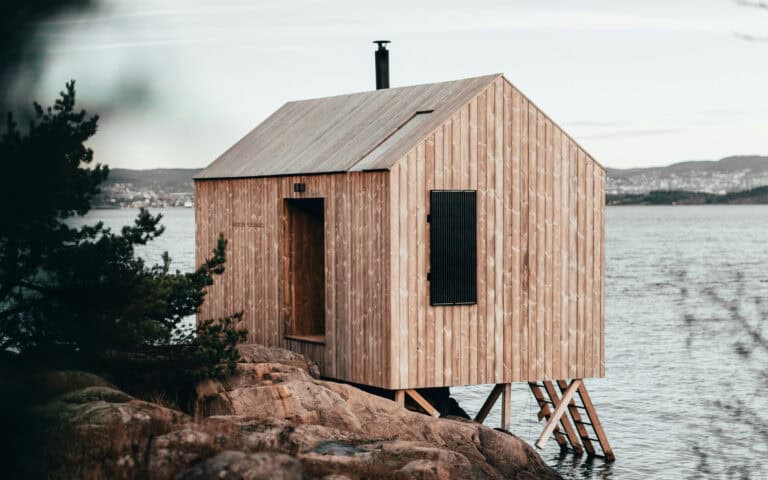
Reduced Environmental Impact
Microliving also affects the environment. With a simple yet sustainable house or micro apartment, you can reduce your consumerism and carbon footprint. Microliving reduces the excessive usage of water, electricity, and the collection of clutter.
A few square meters less for your home would also do a lot for more plants to grow on, and more animals to graze and stay on. Now imagine a thousand families opting for microliving. A small step for man, a giant leap for mankind, right?
Simplicity is Key
Simplicity is a lifestyle that anyone can hop on at any time they want. Less things on your hands meant less things to worry about, too. Microliving promotes the decrease of things that will turn out to be clutter in the end. Also, it promotes the discipline of having enough of everything. As a bonus, the money you save can be spent on more important things like making new memories with travel.
Challenges of Micro-living and How to Overcome Them
However, every good thing has its downside. While most websites and blogs only show what is good, this section will discuss various cons of microliving that may or may not be deal breakers for you. After all, the goal of this blog is to educate you as to whether microliving is for you. Stick around and find whether the cons of microliving are tolerable enough and whether you can still choose to live with it for a better reason in the end.
Limited Space
Again, from the name itself, microliving means that you will be confined to a space of living smaller than most conventional houses, While the previous parts have discussed that this is still customized to fit the needs and wants of the habitants, some people may still find themselves opting for a bigger space with more room for more things. There is no shame in what you choose, and we strongly believe that the best house is still the one you choose for yourself.

Storage Issues
Storage issues may stand as another dilemma if you aim to live in micro apartments but are a collector or a memory hoarder. As it should, your location of living should stand only to hold items that you both want and need, but if you are a memory hoarder, you may have a hard time letting go of items with sentimental value, even if they have no other function than that. Or maybe you’re someone who just enjoys the luxury of more things, collecting trinkets from your travels or possessions you may own from various stages in your life.
Along with these issues, you may also have some problems with noise or airflow, if this is your first time transitioning into micro-living. With that said, you can continue to maintain a lifestyle that focuses on item collection and start the journey toward micro-living at the same time. After all, there are ways to maximize the floor space that you opted for in your home.
How to Combat Them? Declutter, Designate, Design!
Declutter
Decluttering is one, if not the most effective, and therapeutic means of handling your precious belongings at home. With this, you make sure that every square foot of the house is utilized at its maximum while making sure that every nook and cranny is cleaned and placed only with the things that you want to have. I find decluttering therapeutic as it helps me calm myself and see myself in control of things, not just inside the house, but also of things within my mind.
Your city may have its local storage center for effectively decluttering your homes, but in case there is none, you can visit BOXIE24, a website and self-storage space to help you get started.
Designate
Sofa beds have always been fascinating, especially how one small piece of furniture can turn into a bigger one for an almost entirely different purpose and to a larger extent. Other multifunctional furniture like retractable cabinets and convertible desks aren’t new to the public eye, but if you are looking for a few more examples, you can visit Treehugger, a page specifically made to publish blogs on sustainable living – the design with which micro-living revolves around. This way, you can save more space for a cozier house feel without compromising the utility and design of your beloved furniture.
Design
Interior design can either make or break the feel of your home. It is important, above all, to make your house, big or small, feel like a home. Interior architecture and planning allow for maximizing the sustainable living space within your home and still make it feel cozy enough to stay in.
Especially with a micro apartment, the application of excellent interior design is critical. It is so crucial that design needs to have its fleshed-out portion in this article. While there are custom interior designers that you can find, you can also consider design presets already available on the internet, as will be discussed in the next section.
Designing Your Micro-living Space
To be more specific, the design has 3 cornerstones on which it stands. By paying great attention to natural light, customizing color, and creating a meticulous layout, architects and interior designers, along with the choosing of their clients, set a mood, or what Generation Z calls “vibe”, for your home.
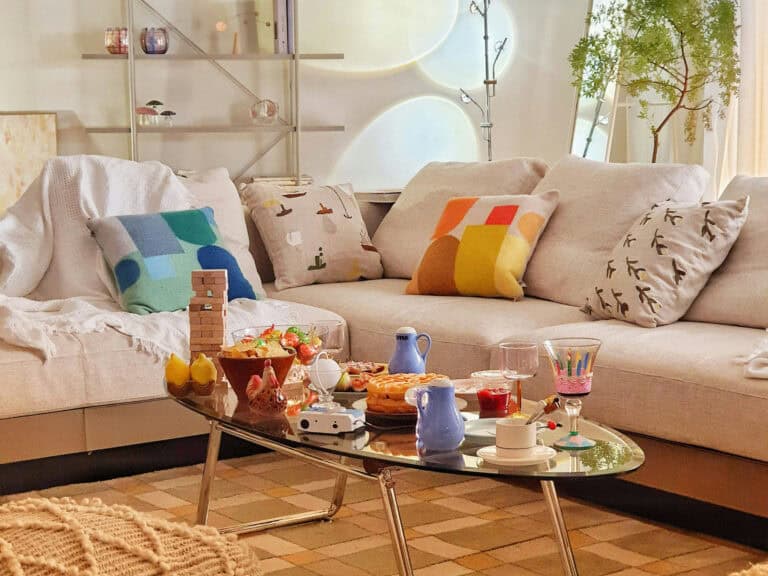
Light
Do you know that lighting doesn’t just affect the overall appeal of your home, it also directly affects your physical health? Sage Journal has published an article stating that natural daytime light and nighttime darkness allow correction of the sleep-wake cycle (circadian rhythm), especially for people who work at home with no tangible separation for toiling and tranquility.
Most houses and apartments opt for natural lighting not just for saving electrical energy, but also for the health of homeowners, and lastly, as a way to improve the overall look of your home. Along with making the house look bigger, nothing says good morning better than the warm gentle rays of the sun touching your face, right?
Color
Alongside light, color is one of the visual aspects of design that can elevate the style of your sustainable living space. Albeit choosing a more natural and grounded vibe, or opting for a warmer and brighter feel, you can consider various color schemes featured in the Cozy Architect’s blogs, as the houses in their blogs are proof of an otherwise dull and small house turned into an eye candy because of their color combinations.
Layout
The bridge between the technical and visual aspects of design; house layouts ensure that there is a place for everything and that everything is in its right place. While floor plans and maps for various rooms for conventional houses are expectedly larger, tiny apartments and houses have more intricate details on their layouts as designers and architects need to turn a smaller area into a spacious home. If you want to find more floor plans on micro homes and apartments, you can consider visiting Dezeen’s webpage, as their blogs focus on design and architecture, tiny or otherwise.
Focusing on interior design, Architonic is another great website where you can find some wonderful examples of where you can base your tiny living space. From old garages to filled-up missing corners in old streets, and even seemingly unlivable water pipes, great design can turn something mundane into something monumental.
By mixing the two solutions of micro-living (decluttering and designation of furniture) with design, almost all small spaces can be turned into a sanctuary where you can make new memories, with the people you cherish most. From Lithuania to Hong Kong, almost every part of the world is starting to hop on the movement towards simplicity, better sustainability, and greater storage space efficiency. Who knows? Maybe you’re the next one to join us!

Real-Life Micro-living Examples
Since you’ve seen all the benefits of micro-living, it’s time we discuss real-life examples of micro-houses to inspire you to a different life of thrift and sustainability – without compromising comfort and convenience. From houses that exhibit astounding architecture to interior designs that will incite interest in micro-living, you can view the following examples as proof of a tinier yet better life.
Kloedenstraße, Berlin
As featured in the famous micro-living page, Never Too Small, the Bergmannkiez area in the Kloedenstraße street of Berlin houses an old and cramped apartment that dated even before the war. With time as its greatest adversary, this architecture hadn’t aged well. But with the gentle yet firm renovation of Jessica Keupp of Dax I, it turned into an appealing micro apartment that can now house families in the modern day. Using vintage furniture, warmer color tones, and relying on materials that are natural in the area, Keupp managed to turn something outdated into a modern classic and walk the fine line between inspiration and innovation.

Wikkelboat, Netherlands
Even Dutch News is starting to headline some micro-houses on their webpage, as the micro-living movement is starting to gain ground in the Netherlands. Marjolein Jonker, the founder of Tiny House Nederland, is one of the many owners of houses that are more affordable yet less carbon footprint-producing. From self-sufficient features like attached solar panels and compost toilets to customization for the owner’s style and aesthetics, micro spaces like these are proof that “smaller” doesn’t have to be less.
Forest Retreat, Czech Republic & Love House, Japan
Are you not yet convinced by the continuing growth of micro-living? Archdaily posted a 2017 blog showing micro-houses ranging from the West (Colorado, USA) reaching even the East (Kanagawa Prefecture, Japan). Along with possibly every country in between, efficient micro-houses that can be carried through land travels or stand on rocks that are otherwise considered architectural blocks have already been built. And to remind you, this was a 2017 blog; posted at a time when modern micro-living is just starting to take root. Imagine the growth it has now!
Susaloon, Madrid
Another proof of effective micro-living is houses featured on Architonic’s page, a web page designed for everything architecture and interior designing. Foldable furniture is employed in some of these houses, allowing for bigger spaces when needed, while some change the positioning of their beds, increasing the storage space while creating a different ambiance for the bedrooms of various houses. Even shipping containers are tailored to become homes – and a beautiful one at that!
The Nomad Room, Netherlands
If you’re looking for a convenient way in, consider The Nomad Room to get your foot into the door of micro-living. With our on-the-go culture here in the Netherlands, almost everyone is traveling and looking for a roof above their heads, or a location to work in. That’s exactly the purpose of the Nomad Room. To find your home away from home is a good thing. But if that house is even more affordable and sustainable than most houses built today, that’s a discussion worth sitting on.
The Nomad’s goal is to ensure a seamless connection between the city you live in and the home you will stay in, all while providing the comfort of your physical space, and the customization to make one place truly yours. Apart from that, the Nomad Room from Citylifer boasts of The High Five, which involves smart furniture to turn your bedroom into a home gym or workplace or a cozy area for your visitors to stay in until it’s time to go.
With just a few adjustments, your bed can be placed above, acting as the ceiling, and can be turned back once it’s time for that good night’s rest. If you’re trying to land your first or next micro apartment, contact us right away, and we will show you that the Nomad Room is the best fit for you!
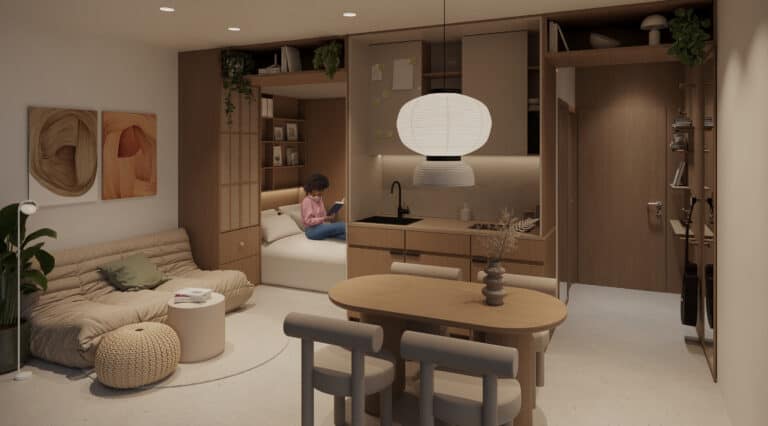
Resources for Micro-living Enthusiasts
If you want to learn more about micro-living and its growing proof of beauty, you can look at these websites and we can assure you that along with us, you can be inspired to find your lifestyle within the means of micro-living!
- Never Too Small is a website with a YouTube channel focused on micro apartments.
- Micro-living, a webpage on – you guessed it, everything micro-living.
- Stylepark is an online blog posting page focused on the architecture of all homes, micro-houses included.
Conclusion
Micro-living will teach you a lot of things, from learning new concepts on sustainability to making you unlearn things that are unnecessary (clutter, extravagance, etc.). The best part is, that you’re not the only one reaping the benefits. With micro-apartments and houses on the rise, this may mean a restored environment for other organisms all while communities are being re-connected.
Living in houses encourages the building of a stronger community that will make us feel more fully alive. That is exactly the essence of micro-living: to pull everyone closer together – literally and figuratively.
The Citylifer Perspective
High-quality coliving experiences
There is a gap in the market for high-quality co-living experiences. We bridge this with properties that meet new-built quality. We employ durable, high-end materials and superior finishes. Moreover, we integrate cutting-edge systems and technology to ensure seamless building and property management.
The High Five: Transform The Nomad into your Home Office
Each Nomad Studio boasts the innovative “High Five” – a multifunctional furniture piece by The Citylifer. This ingenious design allows residents to seamlessly convert a mere 6 square meters into versatile living spaces for sleep, work, dressing, and fitness. Unlike traditional setups where beds dominate the living spaces, primarily used during nighttime, The High Five ensures every resident can enjoy a dedicated home office without compromising on living spaces.
FAQ
Yes! Micro-living is a custom fit for its owner. Whether it’s a family of 4 with growing students, a no-kid couple, a tourist looking for a transient home, or a solo living adult, micro-apartments and houses are customized to fill your every housing need.
No. International quality standards are set in place before the creation of tiny houses even if they range only from 15 square meters to 50 square meters.
Less living spaces and less furniture equates to less work in repairing and cleaning. This means maintenance is both cheap and easy. As a bonus, decluttering techniques can both be efficient and therapeutic!
Yes. Today, the world’s focus is on sustainability. This means we are expecting a rise in the number of microliving apartments and houses in the next 10 years. Not only is this a good option today, but current data shows that it’s going to get better in the future.
If you want to know more about micro-living and co-living, you can go ahead and communicate with us. You can be sure we are one message away. Or as I may put it, you may be one message away from the next best choice for your new home.

